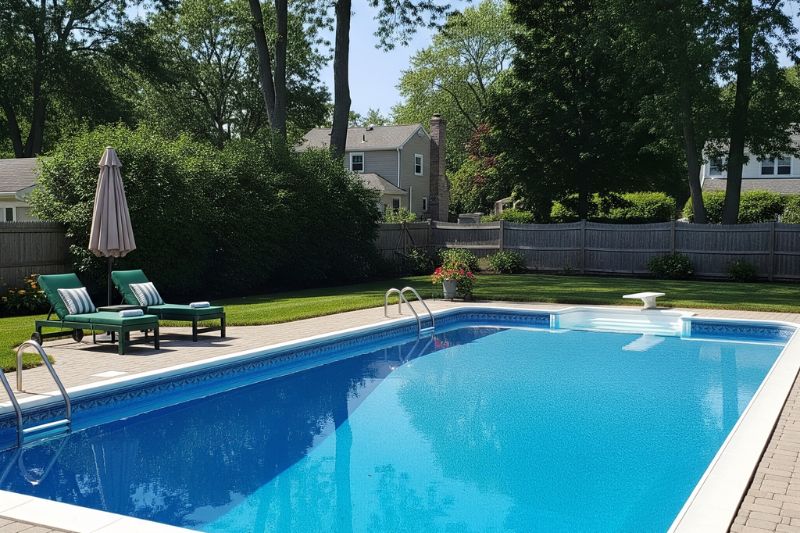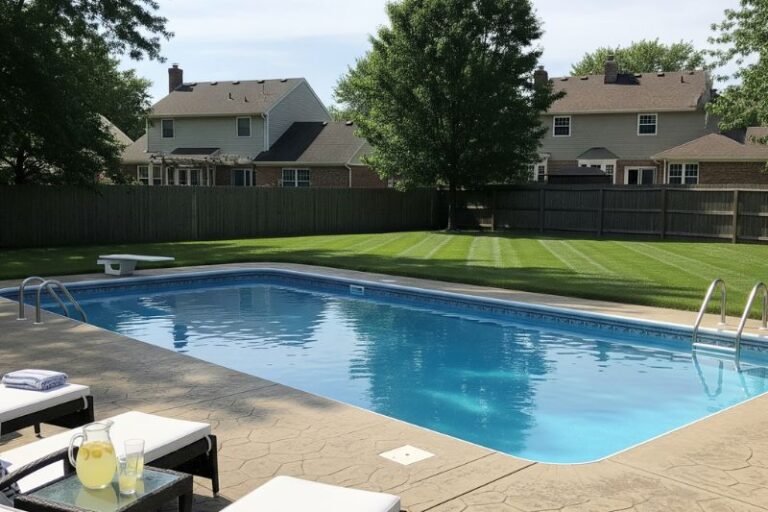So, your pool is cloudy, and you swear you’ve done everything right. Chemicals balanced, pump running, filter on. Yet the water looks like a giant glass of milk. Congratulations, you’re officially the lead detective in your own pool mystery.
Chapter One: The Clues
Like any good investigation, we start with what we can see:
- Water looks cloudy or hazy.
- The bottom of the pool is hard to see.
- The filter pressure gauge is creeping higher than normal.
These clues tell us one thing: your pool is screaming for attention. Something is off, and the usual “I shocked it yesterday” excuse will not hold up in this interrogation.
The Evidence Piles Up
- Dull or hazy water often means fine particles are floating around because your filter isn’t catching them.
- Rising filter pressure signals the filter is doing its job but is clogged and needs a backwash.
- Floating debris or leftover sunscreen can make your pool look worse and block your filter faster.
Ignoring these clues only lets the problem grow. Cloudy water is your pool’s way of waving a white flag.
Chapter Two: The Interrogation
Time to question the usual suspects:
- The Filter: Is it overdue for a deep clean or backwash?
- The Pump: Are you running it long enough to circulate the water fully?
- Your Maintenance Routine: Did you vacuum, skim, and brush this week, or are you on the “it looks fine” schedule?
Filters do the heavy lifting, but only if they are clean. A clogged sand, cartridge, or DE filter will let fine particles sneak back into the water.
Common Oversights That Keep Water Cloudy
- Not running the pump at least 8–12 hours during heavy use.
- Skipping weekly vacuuming and brushing.
- Forgetting to clean skimmer and pump baskets.
- Overestimating what chemicals alone can do.
Chemicals treat the water, but circulation and filtration are what keep it looking good.
Chapter Three: Following the Leads
Here is how to start solving your pool mystery step by step:
- Test Your Water: Check pH, chlorine, and alkalinity. Adjust to the proper range.
- Clean the Filter: Backwash or hose down the filter cartridge.
- Remove Debris: Skim the top, brush walls, and vacuum the floor.
- Run the Pump Longer: Give your pool 24 hours of continuous circulation if needed.
- Use a Clarifier If Necessary: This binds small particles so the filter can catch them.
Take notes like a true detective. You will see the water improve faster if you tackle every suspect.
Chapter Four: The Twist
Sometimes the real culprit hides in the small details. Sunscreen, lotion, and hair products from swimmers can load up your filter. A recent storm may have dropped fine dust or pollen into your water. Or your filter might simply be due for a replacement part.
When you finally uncover the reason and see the water clearing, it feels like solving a case. And this time, you will know better than to assume “it’s fine” after one chemical adjustment.
Case Closed
Your pool didn’t betray you. It gave you clues, and you followed them. Cloudy water is always a result of poor circulation, filtration, or debris overload. Stick to your detective routine, and your pool will reward you with water you can actually see the bottom of.
Keep your notebook handy because every pool season brings new mysteries. The key is paying attention before the problem makes a scene.




